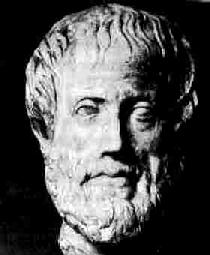Here is Paul and Kitty's page on NtBHA.Interestingly, the first text we see says:
[quote name='http://morelife.org/researchems/NtBHA.html']
Below we present a summary of the major research results for this chemical (NtBHA), taken from published studies in the peer-reviewed literature.
There have been no human studies, and none are currently in progress.[/quote]
Paul and Kitty are anti copyright, and furthermore, also post the following information at the bottom of every page at
MoreLife:
[quote name='http://morelife.org/']
Although the creators of this website assert their ownership of it, the site content is not "copyright" as that term is legally defined because its creators do not agree with government copyright laws.Readers are welcome to copy and distribute any text within the site as long as they do not modify the text and they provide a link to this website as its source, so that those who read it will know where Value for Value gained, can be returned. If those who copy text from or link to this website gain value from that action, then they are similarly expected to return some of that value to its creators.[/quote]
...so, I'll just copy paste the data they have complied on NtBHA.

[quote]Safety and Interactions
"Body weight of the rats was not affected by NtBHA, which suggests that the increase in food consumption did not cause a buildup of fat tissue. NtBHA did not affect the daily water consumption by rats and had no observable side effects on either age group."R
"The use of N-hydroxylamine also avoids the benzaldehyde formed when PBN (-phenyl-N-t-butyl nitrone) decomposes." (by hydrolysis, see below)
Benzaldehyde is both mutagenicR and carcinogenicR, ... was without effect, and in high concentrations, was toxic to the cells."R
"Chronic benzaldehyde exposure is known to cause central nervous system (CNS) disturbances. Previous studies have shown that benzaldehyde causes the formation of reactive oxygen species (ROS) in rat synaptosomal fractions. Benzaldehyde has also been implicated in ROS formation in the CNS of rats treated with toluene. We have found that benzaldehyde effectively inactivates the antioxidant enzyme glutathione peroxidase ... Since glutathione peroxidase is the main enzyme responsible for removal of hydrogen peroxide and organic hydroperoxides in brain, its inactivation by benzaldehyde may be a main contributor to the observed ROS formation and the observed neurotoxicity caused by either benzaldehyde or toluene exposure."R
"We conclude that the spin traps investigated have a low potential to cause acute skin toxicity and may be used safely for in vivo EPR studies in human skin."R "The results showed no cutaneous hypersensitivity to all nitroxides and nitrones, indicating a weak sensitizing potential. That concludes that the nitroxides and nitrones tested in this study have a low potential of acute skin intolerance."R The tested chemicals included PBN and the results will almost certainly apply to NtBHA.
The LD50 (lethal dose for 50%) for mice of the related (but much more toxic) hydroxylamine hydrochloride is 408 mg/kg body weight.R (p829)
Proven Benefits
"Delaying cellular senescence with N-tert-butyl-hydroxylamine (NtBHA) attenuated senescence-associated iron accumulation."R
"NtBHA administration before irradiation at 5 mg/kg daily for 2 weeks provided substantial protection against killing and oxidative damage to mice exposed to whole-body irradiation. These data indicate that NtBHA may have great application potential as a new class of in vivo, non-sulfur containing radiation protector."R
"N-tert-butyl hydroxylamine (NTBH), a derivative of the anti-teratogenic alpha-phenyl-N-t-butyl nitrone (PBN) and synthetic superoxide dismutase (SOD)/catalase mimetics inhibited chromatin release and sustained or dissipated relative mitochondrial membrane potential [in human spermatozoa]."R
"[S]enescence-related and H2O2-stimulated iron accumulation was attenuated by N-tert-butylhydroxylamine (NtBHA), a mitochondrial antioxidant that delays senescence in vitro."R
"In feeding studies in old rats, these mitochondrial metabolites and antioxidants [alpha-phenyl-N-t-butyl nitrone and N-t-butyl hydroxylamine] improve the age-associated decline of ambulatory activity and memory, partially restore mitochondrial structure and function, inhibit the age-associated increase of oxidative damage to lipids, proteins, and nucleic acids, elevate the levels of antioxidants, and restore the activity and substrate binding affinity of a key mitochondrial enzyme, carnitine acetyltransferase. These mitochondrial metabolites and antioxidants protect neuronal cells from neurotoxin- and oxidant-induced toxicity and oxidative damage; delay the normal senescence of human diploid fibroblast cells, and inhibit oxidant-induced acceleration of senescence."R
"In NtBHA-treated rats, the age-dependent decline in food consumption and ambulatory activity was reversed without affecting body weight. The respiratory control ratio of mitochondria from liver of old rats improved after feeding NtBHA. These findings suggest that NtBHA improved mitochondrial function in vivo. The age-dependent increase in proteins with thiol-mixed disulfides was significantly lower in old rats treated with NtBHA. NtBHA was effective only in old rats; no significant effect was observed in young rats.
"In IMR90 cells, NtBHA delayed senescence-associated changes in mitochondria and cellular senescence induced by maintaining the cells under suboptimal levels of growth factors. Proteasomal activity was also higher in cells treated with NtBHA than in untreated cells. NtBHA accumulates in cells 10- to 15-fold the extracellular concentration and is maintained by mitochondrial NADH.
"NtBHA is an antioxidant that is recycled by mitochondrial electron transport chain and prevents radical-induced toxicity to mitochondria.-Atamna, H., Robinson, C., Ingersoll, R., Elliott, H., Ames, B. N. N-t-Butyl hydroxylamine is an antioxidant that reverses age-related changes in mitochondria in vivo and in vitro."
"When fed to rats, PBN (a spin trap) was shown to be an alternative to lipoic acid as a mitochondrial antioxidant. We showed that its breakdown product, NtBHA, was much more active than PBN in vitro.R When we tested its biological activity in vivo, we found it reversed the age-related decline in food consumption and ambulatory activity in rats, although it is not clear which of the two parameters is primarily affected. ... In our present study, we found that NtBHA fed to old rats improves the mitochondrial RCR, prevents the loss of GDH, and decreases glutathione-mixed disulfides in proteins from liver. On the other hand, NtBHA showed no significant effect on liver mitochondria of young rats, even though the dose these rats were receiving was 40% higher than the old rats (as the young consume more water). These observations suggest that NtBHA acts partly as an antioxidant that protects mitochondria and proteins from oxidative damage."R
"It is pointed out that three recently described agents that delay senescence in cultured cells (aminoguanidine, N-t-butylhydroxylamine and kinetin) resemble carnosine in that they are also likely to react with glycoxidised proteins, as well as possess anti-oxidant activity. These observations suggest that pluripotency may be a necessary pre-requisite for effective anti-ageing activity."R
"-phenyl-N-t-butyl nitrone (PBN), a spin trap, scavenges hydroxyl radicals, protects tissues from oxidative injury, and delays senescence of both normal human lung fibroblasts (IMR90) and senescence-accelerated mice. N-t-butyl hydroxylamine and benzaldehyde are the breakdown products of PBN. N-t-Butyl hydroxylamine delays senescence of IMR90 cells at concentrations as low as 10 microM compared with 200 microM PBN to produce a similar effect, suggesting that N-t-butyl hydroxylamine is the active form of PBN. N-Benzyl hydroxylamine and N-methyl hydroxylamine compounds unrelated to PBN were also effective in delaying senescence, suggesting the active functional group is the N-hydroxylamine.
"All the N-hydroxylamines tested significantly decreased the endogenous production of oxidants, as measured by the oxidation of 2', 7'-dichlorodihydrofluorescin and the increase in the GSH/GSSG ratio. The acceleration of senescence induced by hydrogen peroxide is reversed by the N-hydroxylamines. DNA damage, as determined by the level of apurinic/apyrimidinic sites, also decreased significantly following treatment with N-hydroxylamines.
"The N-hydroxylamines appear to be effective through mitochondria; they delay age-dependent changes in mitochondria as measured by accumulation of rhodamine-123, they prevent reduction of cytochrome C(FeIII) by superoxide radical, and they reverse an age-dependent decay of mitochondrial aconitase, suggesting they react with the superoxide radical."R
Many of the proven benefits of NtBHA derive from its being a hydrolysis product of PBN for which more research has been done.
"Recently, it has been shown that the decomposition product of the spin-trapping agent alpha-phenyl-N-t-butylnitrone, N-t-butyl hydroxylamine (NtBHA), mimics alpha-phenyl-N-t-butylnitrone and is much more potent in delaying reactive oxygen species-associated senescence."R
"Thus, dietary supplementation with ALCAR, particularly in combination with PBN, improves mitochondrial function without a significant increase in oxidative stress."R
"To characterize the pharmacological effects of N-tert-butyl-alpha-phenylnitrone (PBN) on life span, we administered PBN in drinking water to 24.5-month-old mice, and the survivors were counted. Their water consumption and body weights were measured as biological markers. PBN-treated animals as compared with control animals had prolonged mean and maximum life spans. Their water consumption decreased but no significant change was found in their body weights, indicating that the metabolism was improved. Results showed that PBN indeed affects physiological functions and extends life span."R
Potential Benefits
"Recently, it has been shown that the decomposition product of the spin-trapping agent alpha-phenyl-N-t-butylnitrone, N-t-butyl hydroxylamine (NtBHA), mimics alpha-phenyl-N-t-butylnitrone and is much more potent in delaying reactive oxygen species-associated senescence. We investigated the protective role of NtBHA against heat shock-induced apoptosis in U937 cells. Upon exposure to heat shock, there was a distinct difference between the untreated cells and the cells pre-treated with 0.1 mM NtBHA for 2 h in regard to apoptotic parameters, cellular redox status, and mitochondrial function. Upon exposure to heat shock, NtBHA pre-treated cells showed significant inhibition of apoptotic features such as activation of caspase-3, up-regulation of Bax, and down-regulation of Bcl-2 compared to untreated cells. This study indicates that NtBHA may play an important role in regulating the apoptosis induced by heat shock, presumably through scavenging of reactive oxygen species."R
"The long-term culture requirements for the immortalization of WI-38 fetal lung fibroblasts included supplementation with N-(tert) butyl hydroxylamine, dexamethasone, zinc and vitamin B12, in addition to growth in physiological oxygen."R
"The antisenescent activity of the spin-trap agent alpha-phenyl-N-t-butylnitrone (PBN) towards cultured human fibroblasts resides in N-t-butyl-hydroxylamine, its hydrolysis product. As hydroxylamines are reactive towards aldehydes and ketones, the antisenescent activity of N-t-butyl-hydroxylamine and other hydroxylamines may be mediated, at least in part, by reactivity towards macromolecular carbonyls, analogous to that proposed for carnosine."R
"This cross-linking by glucose was paralleled by a significant reduction in the in vitro motility speed, suggesting a structure-related decline in myosin mechanics in response to glucose exposure. Further evidence that early glycation products form in the regulatory regions of the myosin molecule is derived from the fact that there is complete reversal of motility speed after reaction with the Schiff base-cleaving agent hydroxylamine hydrochloride."R
The antiaging properties of NtBHA are more likely to be potentiated by antiglycation metabolic actions than by antioxidant properties.R[/quote]
I've always admired Paul and/or Kitty (whoever does this) for their attention to detail and for including references. If you benefit from the information, they ask you to make a small donation.















































